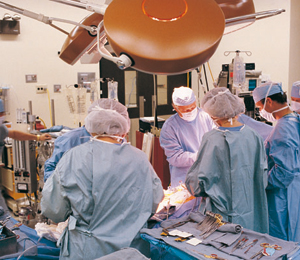
The high prevalence of work-related musculoskeletal disorders in procedural specialists threatens their career longevity, according to authors of a systematic review of the literature.
The meta-analysis, comprising 21 articles and almost 6,000 clinicians, found the career prevalence of clinically diagnosed degenerative disease of the cervical and lumbar spine was 17% and 19% respectively, 18% for rotator cuff pathology and 9% for carpal tunnel syndrome.
The 12-month prevalence of work-related musculoskeletal pain included neck pain (60%), back pain (49%) and upper extremity pain (35%).
Rates of injury and pain were similar in surgeons and interventionalists, and in those performing predominately open or minimally invasive techniques. The wide range of at-risk specialists included gastroenterologists, interventional cardiologists, orthopaedic surgeons, gynecologists, urologists and general surgeons.
Overall 12% of physicians required a leave of absence, practice restriction or modification, or early retirement due to their work-related musculoskeletal disorder.